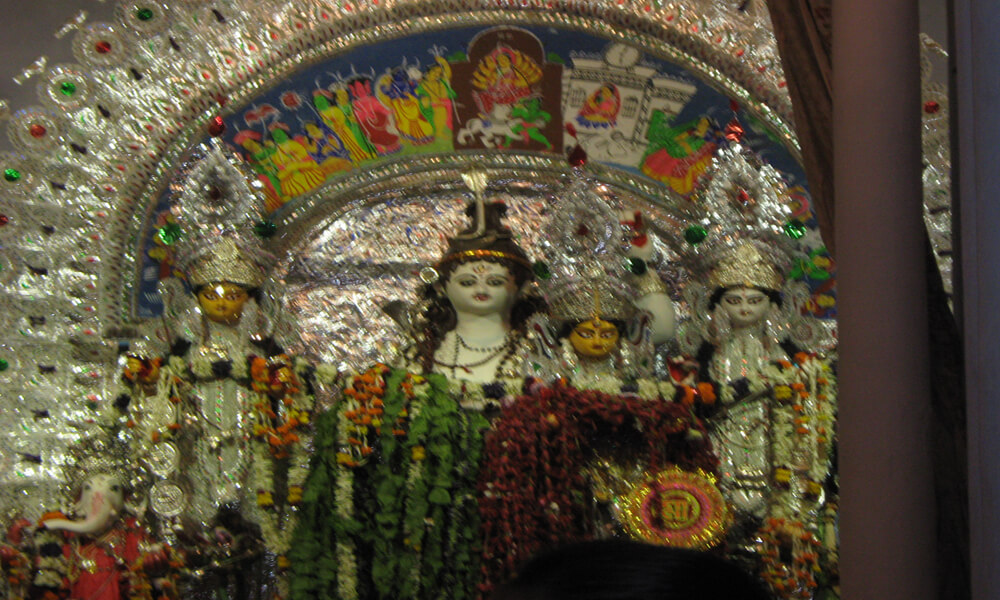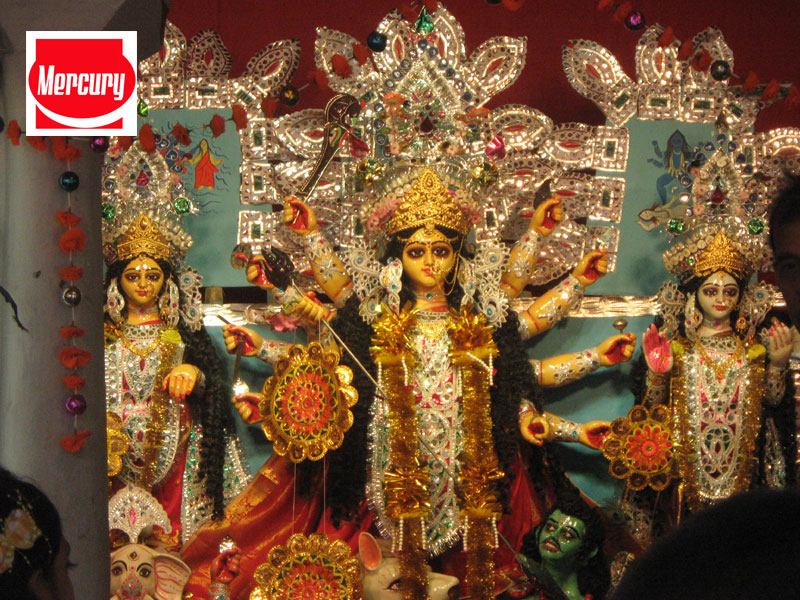
The Traditional Durga Puja in Kolkata
A Cultural Extravaganza - Introduction
Durga Puja is not just a festival in Kolkata; it is a grand celebration that embodies the spirit, culture, and traditions of Bengal. Celebrated with unmatched fervor, this five-day-long festival marks the triumph of Goddess Durga over the buffalo demon Mahishasura, symbolizing the victory of good over evil. The traditional Durga Puja in Kolkata is an awe-inspiring blend of religious rituals, artistic expression, and social gatherings that bring the city to life.




Historical Background: The origins of Durga Puja in Bengal can be traced back to the late 16th century when it was primarily celebrated by wealthy zamindars (landlords) in the rural areas of Bengal. The festival began to gain prominence in Kolkata in the 18th century during the British Raj. Wealthy Bengali families hosted grand pujas, which became a symbol of social status and cultural identity. Over time, the celebration evolved from private household events to public gatherings, with community-based pujas (barowari or sarbajanin) becoming the norm by the early 20th century.
The Traditional Rituals: The traditional Durga Puja in Kolkata is a meticulously planned event, following a series of religious rituals spread over ten days, with the last five days being the most significant.
Mahalaya: The festival begins with Mahalaya, a day that marks the arrival of Goddess Durga on earth. This day is celebrated with early morning recitations of the sacred text Chandi Path and the soulful rendition of “Mahishasura Mardini” on the radio, evoking the divine energy of the goddess.
Bodhan and Saptami: The actual puja starts on the sixth day, known as Shashthi, with the unveiling of the goddess’s idol. On Saptami, the goddess is invoked through the ritual of Pran Pratishtha, where life is infused into the idol by chanting mantras and offering prayers. A banana plant, symbolizing the goddess’s consort Lord Ganesha, is draped in a saree and placed beside the idol, a ritual known as Kola Bou Snan.
Ashtami: Ashtami, the eighth day, is considered the most auspicious day of the festival. Devotees participate in Kumari Puja, where young girls are worshipped as the living embodiment of Goddess Durga. The day also features the grand Sandhi Puja, performed at the juncture of Ashtami and Navami, marking the moment when Goddess Durga killed Mahishasura. The atmosphere is electrified with the sound of dhak (traditional drums), conch shells, and the chanting of mantras.
Navami: Navami, the ninth day, is marked by the worship of the goddess with the Maha Aarti, signifying the end of the main rituals. It is a day of feasting, with traditional Bengali delicacies like bhog (food offerings) served to devotees.
Dashami and Visarjan: The festival concludes on Dashami, when the idols are immersed in rivers or water bodies in a grand procession, known as Visarjan. This ritual signifies the goddess’s return to her celestial abode, leaving the devotees with a sense of melancholy and anticipation for the next year’s celebrations. Married women participate in Sindoor Khela, a ritual where they smear each other with vermillion, symbolizing the strength and power of womanhood.
The Artistic Splendor: One of the most striking features of Durga Puja in Kolkata is the artistic brilliance on display. The city is transformed into a visual spectacle with intricately designed pandals (temporary structures) and elaborately crafted idols. Artisans work for months to create these masterpieces, which often reflect contemporary social themes, mythology, and folk traditions. The pandals are not just places of worship but also centers of art and culture, attracting millions of visitors each year.
Community and Social Impact: Durga Puja is a time when Kolkata comes together as a community. It transcends religious and social boundaries, with people from all walks of life participating in the festivities. The pujas are funded by local communities, businesses, and sponsors, making it a collective effort. The festival also provides a significant economic boost to the city, with the demand for everything from textiles and jewelry to food and transportation skyrocketing during this period.
Conclusion: The traditional Durga Puja in Kolkata is more than just a religious festival; it is a cultural phenomenon that encapsulates the essence of Bengal. It is a time when the city pulsates with energy, creativity, and devotion. The rituals, the artistry, and the community spirit make Durga Puja an experience that is both deeply spiritual and profoundly human. For those who witness it, Durga Puja in Kolkata is a celebration that lingers in the heart long after the last beats of the dhak have faded.
Famous Traditional Durga Puja in Kolkata
- Sovabazar Boro Rajbari -Raja Radhakrishna Deb
- Sovabazar is Choto Rajbari – Raja Nabakrishna Dev
- Thanthania Dutta barir Puja
- Chatu babu & Latu babu’r Thakurabari
- Babu Khelat Chandra Ghosh -Pathuriyaghata
- Darjee para -Mitra Barir Puja
- Jorasanko Shib Krishna Daw Bari Puja.
- Colootala Dhar Bari Puja
- Kolutola Dhar Barir Puja
- Rani Rashmoni- Janbazar – Rani Rashmonir bari
- Hatkhola Dutta Bari
- Bhawanipur Mullick Bari
We are Mercury Tour Operator, the Best Travel agency in Kolkata.
We provide domestic and international tour packages across the globe. you can choose our special tour packages from Kolkata, Delhi, Mumbai, Bangalore, Chennai, and all major cities of India. We conduct the Darjeeling tour, Darjeeling Gangtok Tour, Sikkim Silk route tour, Assam and Shillong tour, Arunachal tour, Dooars tour, Sundarban tour, Purulia tour, West Bengal Tour, Andaman tour, Kolkata tour, Durga puja parikrama, Daringbadi tour, Satkosia tour, Shimla Tour, Kashmir Tour Package, Leh Ladakh tour package, Rajasthan tour package, Goa Tour Package, Madhyapradesh Tour package, Kerala tour package. For International Tour, we provide Thailand Tour Package, Vietnam Tour Package, Bali Tour Package, Bangladesh Tour Package, Bangladesh Shaktipeeth Tour, Singapore Tour, Malaysia Tour package, Srilanka Tour, Dubai Tour, Europe Tour package, Bhutan tour, Nepal Tour, Maldives Tour, Kenya Masai mara tour, Kenya and Tanzania Tour, Egypt tour packages from India.